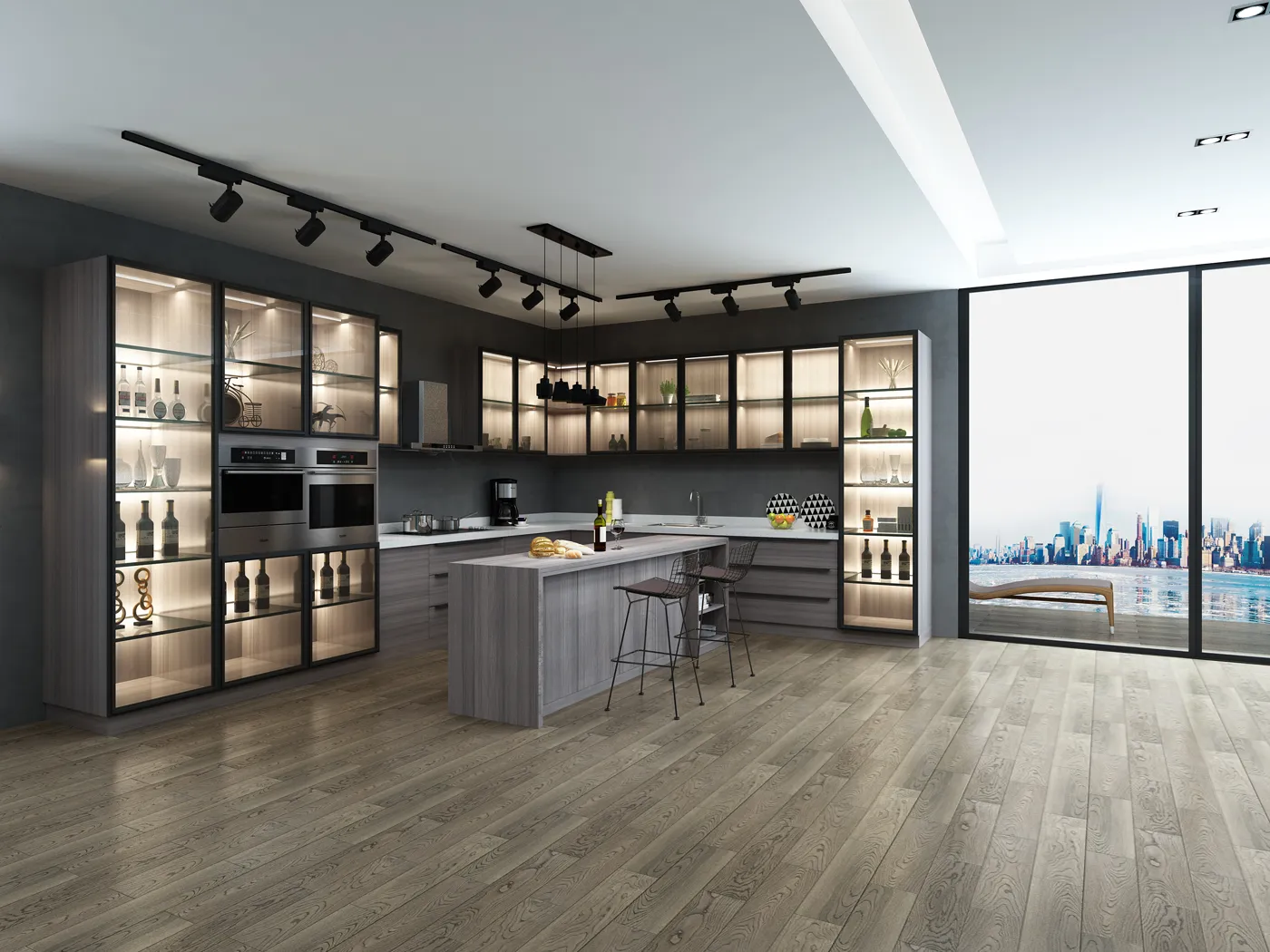Let's talk about why China's kitchen cabinet industry isn't just surviving but thriving globally. If you've ever renovated a kitchen, there's a solid chance something in it came from China. What started as small workshops has transformed into high-tech factories churning out everything from basic cabinets to luxury custom pieces. It's the kind of growth story that makes economists nod approvingly.
This industry doesn't just matter because it produces shiny countertops—it's become central to China's manufacturing identity. We'll dig into how they're winning globally despite competition, where the pressure points are (because every industry has them), and what future moves could keep them on top.
The Edge: Why Everyone Buys Chinese Cabinets
Cost Control That Actually Works
Here’s the thing: when Chinese factories set up production lines, they build ecosystems. Imagine one industrial park where aluminum suppliers, hardware makers, and cabinet assemblers operate within walking distance. That’s not just convenient—it slashes shipping costs and turnaround times.
Real-world example: A Jiangsu-based manufacturer can get drawer slides delivered in 90 minutes because the supplier is two blocks away. That logistics magic translates to cabinets landing in American homes for 15-20% less than domestically produced options.
Factories That Learn Faster
Chinese manufacturers don’t just use technology—they adapt it obsessively. While Western factories might upgrade equipment every decade, Guangdong cabinet plants overhaul production lines every 3-4 years.
Walk into a top-tier factory today and you’ll see:
- AI-powered wood cutting systems wasting just 8% material (vs. 15-20% a decade ago)
- QR codes tracking each cabinet component from sawmill to shipping container
- Automated coating booths that apply finishes in dust-free environments
They’re not waiting for permission to innovate; they treat R&D like oxygen.
Customization Without Chaos
This is where they’re quietly dominating: custom kitchen cabinets . Unlike the old days of "choose from these five designs," Chinese factories now handle highly personalized orders at mass-production speeds.
How? Modular systems where elements get mixed-and-matched like Lego. That curved walnut island with integrated charging stations? The system treats it as data points, not a headache. Clients get personalized designs in 72 hours instead of weeks.
The Squeeze: Challenges Knocking at the Door
The Green Tightrope
European regulations now require cabinet makers to account for every gram of formaldehyde emissions. But going eco-friendly costs serious cash—upgrading to water-based adhesives alone adds 8-12% to material costs.
Factories face tough choices: absorb the costs and shrink profits, or raise prices and risk losing budget-conscious buyers. Some are cleverly turning sustainability into premium branding—charging more for cabinets certified as carbon-negative.
The Talent Crunch
Young Chinese workers don’t want factory jobs—period. Skilled CNC operators can make more delivering food via apps without breathing sawdust all day. Guangdong plants report 30-40% annual worker turnover.
Solutions emerging:
- Robotics handling repetitive tasks (sanding, painting)
- Upskilling programs turning workers into tech supervisors
- "Clean factory" designs with air filtration and daylight
Global Skepticism
The "Made in China" label still triggers quality doubts despite massive improvements. Overcoming this means transparent storytelling—showing customers the solid wood joins and eco-certifications, not just the price tag.
The Next Chapter: Where Industry Leaders Are Betting
Smart Integration
Future cabinets aren’t just boxes—they’re tech hubs. Early innovations:
- Self-closing drawers synced to smartphone schedules
- UV-C light sanitation compartments built into pantry units
- Countertops with wireless charging surfaces
Manufacturers partnering with Huawei and Xiaomi see this as the path to premium positioning—like German appliances did decades ago.
Beyond Kitchens
Savvy factories are repurposing their expertise for hotel casegoods, retail displays, and office systems. The production tech adapts surprisingly well, and profit margins are often higher.
Neighborhood Factories
Instead of one mega-factory serving the world, companies are experimenting with micro-factories near key markets. A Vietnam-based satellite plant serving Southeast Asia avoids tariffs and ships faster. This model requires major IT investment but promises resilience.
Wrapping It Up: Adaptation as Tradition
China’s cabinet industry got here by doing two things relentlessly: driving efficiencies and listening to markets . As environmental standards tighten globally and consumers demand personalization, their willingness to retool systems—not just products—will determine the next decade.
One thing seems certain: these manufacturers won't just cling to old advantages. Whether it’s carbon-neutral custom cabinet lines or AI-designed kitchen ecosystems, expect them to keep rewriting rules while competitors scramble to catch up.













